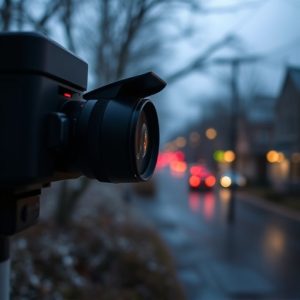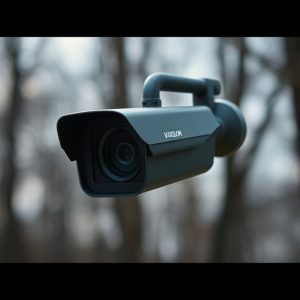Uncover Hidden Cameras: Location Detection Tips for Home Surveillance
Wireless surveillance systems, featuring hidden cameras for home monitoring, have dramatically enhan…….
Wireless surveillance systems, featuring hidden cameras for home monitoring, have dramatically enhanced residential security by providing remote access to live and recorded footage via apps or web interfaces. To identify these cameras, inspect high-traffic areas near door handles, switches, and unusual electrical outlets, as well as common hiding places like behind furniture or within everyday items. Using Radio Frequency (RF) detection technology and digital forensics can further aid in locating and disabling hidden cameras. Understanding legal considerations and privacy awareness is crucial when implementing hidden cameras for home monitoring.
Uncover the secrets behind wireless surveillance equipment location detection with our comprehensive guide. In today’s digital era, understanding how to identify hidden cameras is crucial for home monitoring. We explore advanced techniques like radio frequency (RF) detection tools and digital forensics to pinpoint covert devices. Learn expert tips on where to look—from power outlets to entertainment systems—and navigate legal considerations related to privacy. Equip yourself with the knowledge to ensure a safe, secure living space.
- Understanding Wireless Surveillance Technology
- Identifying Potential Hidden Camera Locations
- Utilizing Radio Frequency (RF) Detection Tools
- Visual Inspection and Digital Forensics
- Legal Considerations and Privacy Awareness
Understanding Wireless Surveillance Technology
Wireless surveillance technology has revolutionized home monitoring, offering a discreet and versatile solution with hidden cameras for home protection. These devices transmit video and audio signals wirelessly, allowing users to access live feeds or recorded footage remotely via internet-connected devices. Understanding how this technology works is crucial when setting up an effective security system.
The core components include sensors, transmitters, receivers, and storage units. Each hidden camera captures footage and converts it into digital signals, which are then transmitted wirelessly to a receiver or a base station connected to the internet. This enables users to monitor their properties from anywhere at any time through smartphone apps or web interfaces. The technology’s low-power consumption and small size make hidden cameras easily concealable, enhancing their effectiveness in home security while ensuring privacy for residents.
Identifying Potential Hidden Camera Locations
When it comes to identifying potential hidden camera locations, especially within your own home, a keen eye and some strategic thinking are essential. Hidden cameras for home monitoring can be discreetly placed in various areas, making them hard to detect. Look beyond obvious places like ceiling corners or wall spaces. Consider high-traffic zones like near door handles or switches, as these areas might provide optimal views while remaining out of sight. Additionally, check for any unusual electrical outlets or cables running along walls, which could indicate the presence of a covert surveillance device.
Examine your home’s layout and consider common hiding spots that offer both privacy and line-of-sight. For instance, behind large pieces of furniture, inside decorative objects like oil lamps or picture frames, or even within seemingly ordinary items like smoke detectors or clock radios. Staying vigilant and regularly assessing your surroundings can help you spot these hidden cameras for home monitoring, ensuring a safer and more secure living space.
Utilizing Radio Frequency (RF) Detection Tools
Uncovering hidden cameras and surveillance equipment is a crucial aspect of home monitoring, ensuring your privacy and safety. One powerful tool in this quest is Radio Frequency (RF) detection technology. RF detectors are capable of identifying wireless signals, making them an excellent first line of defense against unauthorized devices. These tools can pick up on the unique RF signatures emitted by hidden cameras, motion sensors, and other surveillance gear.
By using RF detection tools, homeowners can proactively scan their properties for any suspicious signals. This method is particularly useful in detecting hidden cameras, which often operate on specific radio frequencies. With a good quality RF detector, you can identify and locate these devices, ensuring that your home remains secure from prying eyes. It’s an effective way to maintain control over your personal space and peace of mind.
Visual Inspection and Digital Forensics
A visual inspection is often the first step in detecting hidden cameras for home monitoring, especially in cases where security breaches have already occurred. Trained professionals or individuals with keen observation skills can meticulously scan every corner and nook of a space using specialized equipment like thermal cameras that can highlight irregular heat signatures commonly associated with covert surveillance devices. Even seemingly mundane objects like picture frames or clocks could be hiding tiny cameras.
Digital forensics plays a crucial role in identifying and recovering data from these hidden cameras. Experts utilize advanced tools to extract digital footprints left behind by the devices, such as images, videos, or even metadata that can reveal the camera’s unique identification numbers. This process not only helps in locating the surveillance equipment but also provides vital evidence for further investigations, ensuring that those responsible are held accountable.
Legal Considerations and Privacy Awareness
When considering wireless surveillance equipment, it’s crucial to understand legal considerations and privacy awareness. The use of hidden cameras for home monitoring must adhere to specific regulations and ethical guidelines to avoid infringing on personal privacy rights. Different regions have varying laws regarding the installation and operation of surveillance devices, so it’s essential to research and comply with local statutes.
Privacy is a paramount concern, especially when employing wireless surveillance systems. Homeowners should ensure that their camera placement respects the boundaries of private spaces and does not capture areas that could lead to an invasion of privacy for neighbors or passersby. Transparent communication about the presence of monitoring equipment can help foster trust and understanding within communities.
Wireless surveillance technology offers powerful tools for home monitoring, but it’s crucial to balance effectiveness with privacy awareness. By understanding how hidden cameras operate and utilizing techniques like RF detection and digital forensics, you can navigate the potential challenges of these devices. Remember that legal considerations are paramount; always ensure any monitoring activities comply with privacy laws. With proper knowledge, you can protect your home while staying within ethical boundaries.


